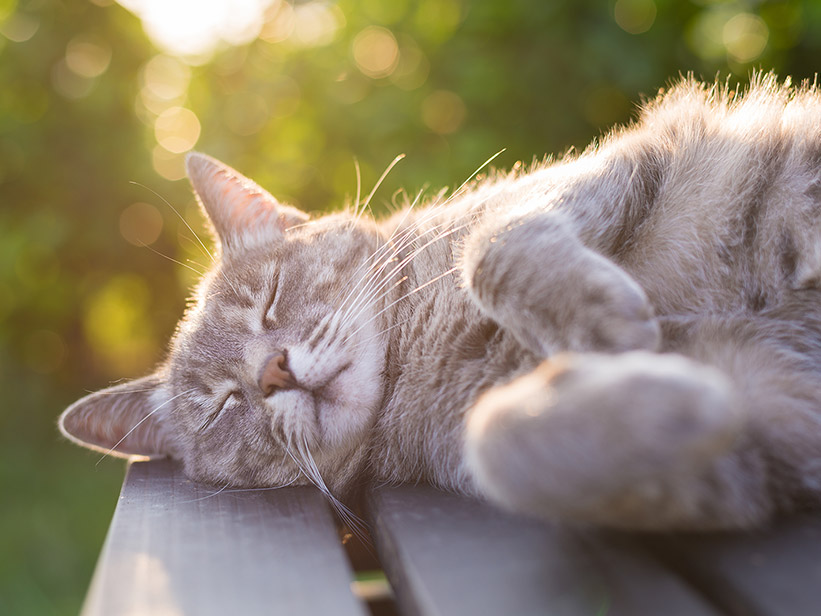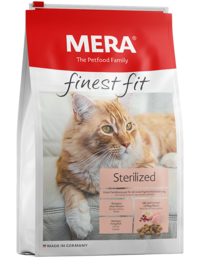Cat cold
If a cat sneezes frequently, it may suffer from cat cold. This disease is worse than it sounds and should be treated by a veterinarian.
What is cat cold?
A cat cold is a contagious, infectious illness of the respiratory tract and mucosa, which is triggered by various pathogens such as viruses or bacteria. Vets refer to this illness as cat rhinitis or cat pneumonia. It is important to identify and quickly treat the illness; otherwise, it can be fatal for the animal.
As a rule, it is a complex of symptoms given that a variety of pathogens can be responsible for this infectious illness. In most cases, herpes or caliciviruses, like the feline herpes virus or the feline calicivirus, cause the illness. In the event of bacterial infection, Bordetella or Chlamydia may be the cause, although Chlamydia can also be a problem for humans and dogs.
Unfortunately, the pathogens are mutually beneficial which is why several pathogens can often be detected with a cat cold. They are mainly responsible for various symptoms in each case: The herpes virus can cause serious eye ulcers in cats, for example. Caliciviruses can result in lung inflammation or arthritis.
Symptoms of cat colds
What symptoms manifest with a cat cold?
In the event of a cat cold, the cat presents with very similar symptoms to us humans when we have a cold or sniffle. However, the severity of the illness among cats is more comparable to flu than a harmless sniffle.
Typical symptoms of a cat cold are streaming eyes, inflamed conjunctiva, cough, exhaustion, sneezing, fever, breathing difficulties and nasal discharge. Affected cats initially suffer from clear and possibly purulent cloudy discharge from the nose at a later stage. The infection can be clearly seen on the nose of the animal. If a cat cold is not treated on time, this infection may also lead to purulent, encrusted eyes, mouth ulcers, difficulty swallowing, lack of appetite, bone loss or a lung inflammation.
As soon as the first signs of illness manifest themselves in your cat, you should consult a vet as soon as possible. This will enable early treatment in order to minimise any long-term effects of this infection. As soon as the first symptoms can be identified in the cat, you should get a veterinary report as quickly as possible, so as to clarify whether it is a harmless sniffle or in fact a cat cold. Once the diagnosis has been confirmed, treatment of the cat can be initiated in a targeted way.
Causes of cat colds
How do cats get colds?
Cat colds are highly contagious and in most cases transmitted by direct contact between cats. That may happen when a cat sneezes or coughs, and results in the communication of saliva or secretions. It doesn’t have to be directly transmitted, but can also occur at a shared feeding place or drinking bowl, for instance. Sometimes the illness is transmitted during a fight. The examples demonstrate that indoor cats living alone are only at low risk of contracting cat colds. Far greater is the risk of infection among outdoor cats or in multiple cat households. However, we also cannot rule out that the owner transports a pathogen into the house on their shoes or clothing, Exercise caution at all times in case of one of the above-cited symptoms.
Diagnosis of cat colds
How can we detect whether the cat has a cold?
A vet can usually diagnose whether a cat has a cat cold very quickly because symptoms such as sneezing, coughing, streaming eyes and nasal discharge are clear to see. Nevertheless, a further examination is advised in order to identify the pathogen(s). To this end, the vet may take a smear of the mucus membranes to detect any bacteria involved. Furthermore, a blood test serves to detect antibodies against certain viruses.
Curing cat colds
If a cat cold is identified and treated in time, it does not usually result in any long-term damage. Not only the vet, but also you yourself can contribute towards this: Ensure that the cat drinks enough and eats high-quality cat food to strengthen the immune system. It may be that they have less appetite right now. Best suited for this is MERA finest fit cat food, which contains a high meat content, and gentle cooking ensures important vitamins and nutrients are preserved.
You also need to make sure that your cat receives enough affection during this difficult time, and has a warm place to recover in peace. It is important that ill animals are not exposed to one another. In other words, contact between cats should be avoided in a multiple cat household. What’s more, it would be better for outdoor cats to remain at home for the next few days so as to not infect other cats and conserve its energy.
Prevention against cat colds
The best protection against cat colds is prevention through a timely vaccination
The “Standing Committee on Vaccination Veterinary Medicine” provides advice about this. The first vaccination (initial immunisation) among cats usually takes place in the eighth, twelfth and sixteenth week of life. Depending on the vaccine, a follow-up vaccination should be carried out every two to three years starting from the 15th month of life. A vaccination does not provide the cat with one hundred per cent protection. Because despite immunisation, in the worst case a cat can still become infected with a cat cold, which is why typical symptoms such as runny nose, cough and inflammations should not be overlooked if ill cats are to receive help fast.







